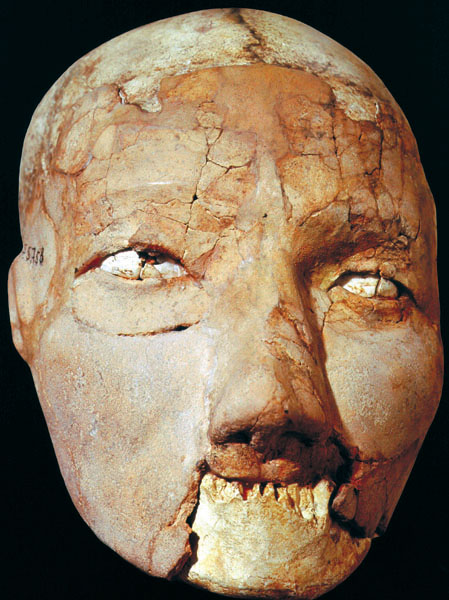Stone Age Death Masks
A new interpretation of some of the world’s earliest human images

In the Neolithic period (c. 8000–4000 B.C.), Near Eastern peoples created a number of arresting images to represent (or influence) their world. They carved small female figurines immodestly presenting their breasts or pregnant stomachs, for instance, and they depicted animals being viciously stabbed with flints. Perhaps the most powerful and haunting of these Stone Age images are plaster human heads—modeled on the skulls of deceased human beings after the flesh had decayed away—that eerily stare back at us across the millennia.
But what do these modeled heads symbolize?
The standard interpretation is that they were created for use in an ancestor cult. The British archaeologist Kathleen Kenyon, who found plaster heads at Jericho, called them “portrait skulls” to suggest that each was modeled on the skull of a dead ancestor. According to this theory, the living could reclaim the powers of the dead by making a likeness of the deceased’s head.a
It is time to challenge this interpretation. Not only do the facts fail to support it, but it flies in the face of thousands and thousands of years of Near Eastern history.
Already a library member? Log in here.
Institution user? Log in with your IP address.

